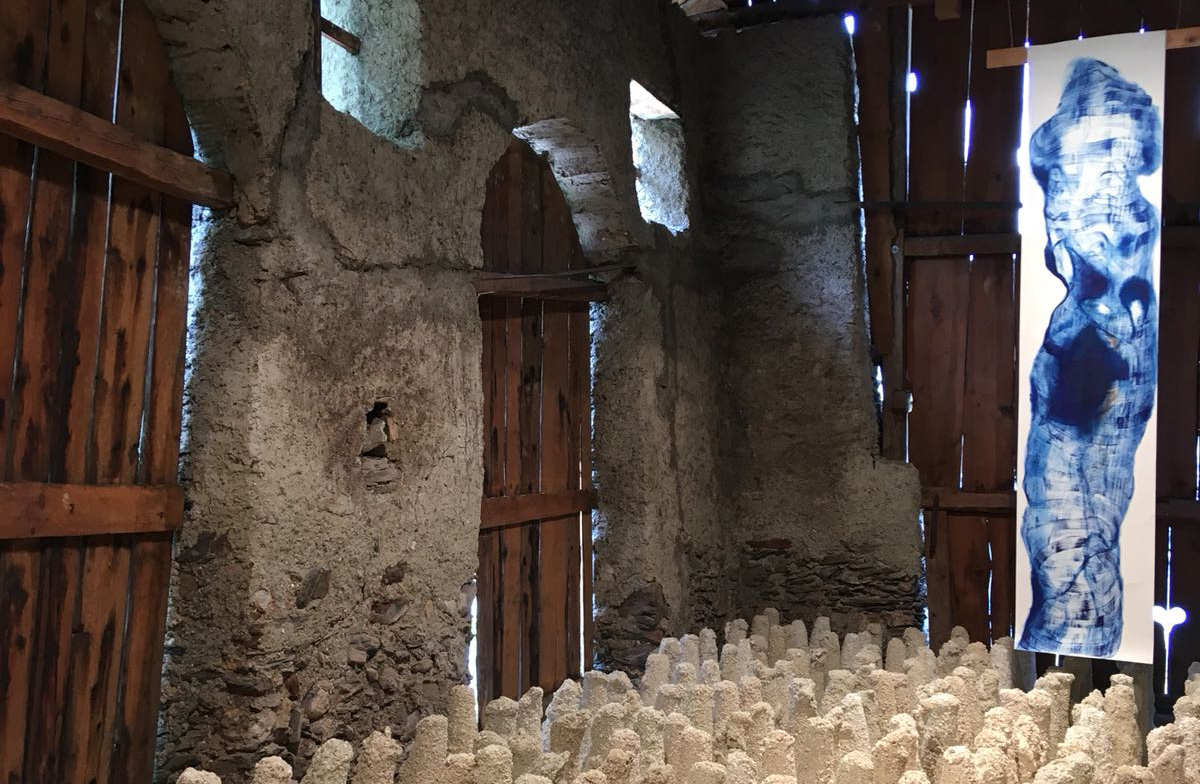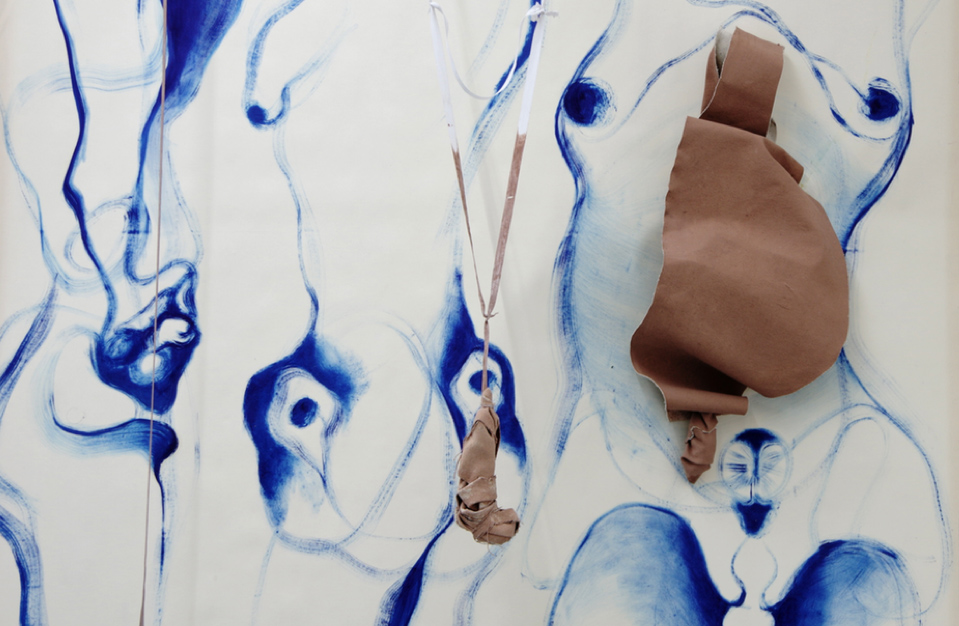
Urano Irradiating the Mountain
Since 2016, Sandra Salazar has produced an extensive repertoire of bodies through different media, such as: drawings, large-format paintings, ceramics and installations. Her works documents the sensations and personal images that afterwards she delicately transfers to paper or clay. In these works, the artist seems to want to disassemble the flesh, the bones, the organs and their systems (reproductive, respiratory, locomotor, excretory), the hormones and their metabolism, the fluids, the nervous fibers and their intricate apparatus of electrical communication and chemistry. The result is a series of landscapes and objects that undo the marks of sexual difference, colliding the systems of signs that organize the normative regime of masculine and feminine.
But if we see in her images a mere play of forms around the human figure is necessary to look again. Salazar does not offer us an anatomy atlas or the representation of a passive body ready for clinical or psychiatric inspection. Quite the opposite: her work circles around what can not be absorbed by the gaze of medical discourse, questioning the legal frameworks that seek to define which bodies are suitable for public space and intimacy. The pictorial and tactile geographies -body and space- that Salazar rehearses are questions about the relationship between visibility and autonomy, between visual epistemology and the struggles for self-determination, between the devices that construct us as sexual bodies and the opportunity to create symbols for affective recognition and self-identification.
Her is an exercise that, to some extent, is related to the work artists and activists who have operated as critical geographers of the production of sexuality; such as Carol Rama, Eva Hesse, Phia Ménard, Annie Sprinkle, Bob Flanagan, Renate Lorenz and Pauline Boudry, Lorenza Böttner or Sergio Zevallos. Salazar observes how the iconography of sexual anatomy – infused into biology classes and verified in the rituality of medical care – is not merely descriptive but performative and artefactual: it produces the subjectivities of bodies, impacts on us as if it was a planet being hit by the comet of identities. But any collision leaves fragments and cracks from where to obstruct or revert the conventional processes of social identification. Salazar works meticulously with these materials: she cuts and fits limbs, holes, ducts, liquids and organs that invoke another visual genealogy for the human and its possibilities.
